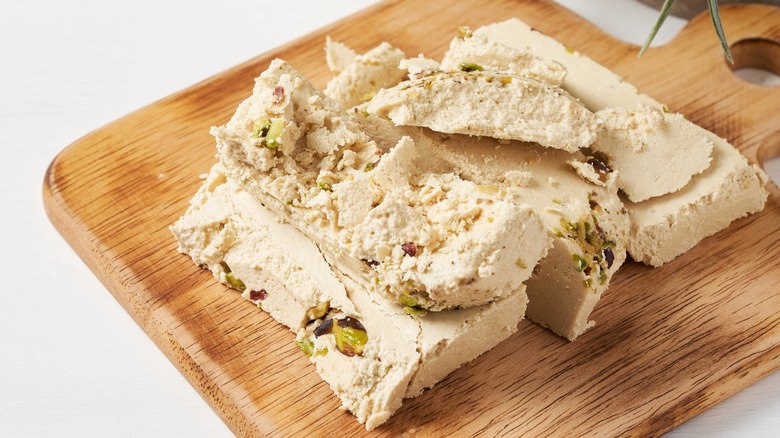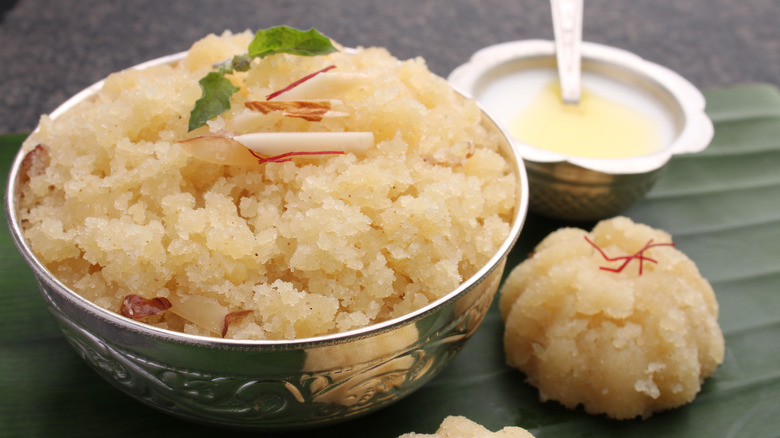What Is Halva Made Of And What's The Best Way To Eat It?
Halva is a fudgy, candy-like, sweet treat made with sugar, honey, grains, flour, nuts, or seeds many variations that is a part of some Middle Eastern, Mediterranean, Eastern European, and South Asian regional cuisines. Depending on where the version you are sampling comes from, halva can also go by the names halawa, halava, halvas, halvah, helva, hilwa, or halawi.
In Arabic, "halwa" translates to "sweet," "sweet dish," or "sweet meat." More than likely, the dish originated in the area around present day Turkey, Syria, or Iran during the 13th century and spread from there, though some food historians date the creation of halva as far back as 3000 BCE.
In general, this confection is made by combining nut or seed paste, or toasted flour, with a heated sugar syrup. The mixture is pressed into a pan, allowed to set, and cut into pieces or spooned into bowls. Halva can be a vehicle for spices, flower extracts, chocolate, nuts, citrus zest, or dried fruits.
How to eat halva depends on your preferences and traditions, but it is perfect for anytime you need a sweet and satisfying pick-me-up. Typically, halva is served at room temperature, but can also be served warm or cold. Halva can be accompanied by coffee, tea or wine. It can be snacked on by itself, as part of a spread of desserts, or with bread. Sometimes halva is served topped with whipped cream or in a thinner, spoonable, consistency.
What are some regional variations of halva?
Ingredients and preparations of halva vary across regions of the globe where it is part of the cuisine. Nut- or seed-based halva tend to have a crumbly, crisp, grainy, and crystalline texture while flour- and grain-based halva are more soft, squishy, and pudding-like.
Turkish flour helva combines toasted wheat flour, butter, and pine nuts, and Turkish tahini-based helva can be loaded with pistachios. Tahini, which is a paste made from sesame seeds, is a common base for halva and is also used in Middle Eastern, Balkan, and Greek preparations. Macedonian tahini halvas can be flavored with chocolate or sprinkled with lemon juice and cinnamon.
Indian semolina halwa can be flavored with cardamom and topped with cashews, while Greek semolina halva may have raisins, walnuts, and orange zest. A Ukrainian version uses sunflower seeds, while a North Indian take uses carrots as the base. Egyptian halva might be stuffed into pita for a quick snack, and saffron- and rose-flavored Persian halva pudding is traditionally served to women after they have given birth. You could spend a lifetime sampling all the different versions of halva, so do your sweet tooth a favor and get to snacking!


